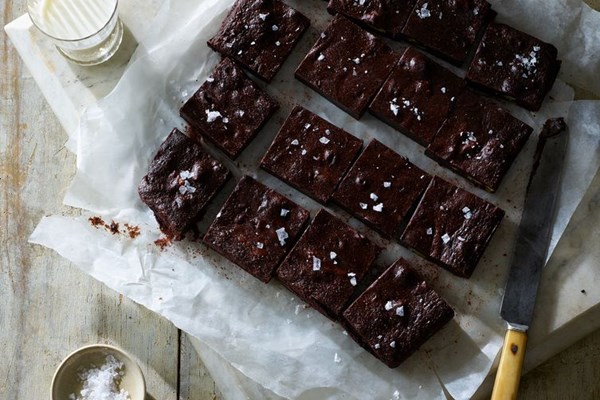Pick the right cocoa powder for the job
December 20, 2019 by DarcieDutch-process, high-fat, black, natural: which type of cocoa powder should you use for hot chocolate, brownies, cakes, and other recipes? Most of the time a recipe will merely ask for cocoa powder without specifying a type. It can be rather confusing, but Epicurious is here for us. They have assembled a succinct primer on how to pick the right cocoa for the job.

Recipes that call for a specialty cocoa powder often specify ‘Dutch-process’ cocoa. Named after the country of its inventor, Dutch process cocoa tames some of the acidity found in the regular (often called ‘natural’) product. Cocoa beans are soaked in an alkali solution to achieve this acid-neutralizing effect, hence you may see the words “alkalized” or “processed with alkali” on the label of Dutch cocoa. In addition to making the cocoa less acidic, the process makes the cocoa darker. Black cocoa is ultra-Dutched cocoa and will make your baked goods extremely dark in color (think Oreos).
Another label you might see on cocoa powder is “high fat,” which means the percentage of fat (cocoa butter) is between 22% – 24%. Most non-premium brands clock in at about half that, although you will not see the term “low fat” on the label. The only way to know for sure is to read the nutritional information of fat grams per serving and choose ones with more fat. High-fat cocoa will be, as the name suggests, richer in flavor.
So are all of these products interchangeable? Yes and no. Because regular cocoa powder is acidic, it will react more strongly to leaveners, especially baking soda. If a recipe calls for only a small amount of cocoa, or if you’re making something that does not need to rise (like a sauce or custard), you can use regular or Dutch-process cocoa. For leavened recipes that call for both baking powder and baking soda, you can also whichever type you like best. However, if the recipe is for cakes or cookies that depend on baking soda, it’s best to stick with the type specified in the recipe. The fat percentage does not affect the rise, only the flavor, so it is not a consideration for leavening purposes.
Photo of Alice Medrich’s best cocoa brownies from Food52 by Alice Medrich
Categories
- All Posts (6940)
- Antipasto (2135)
- Author Articles (247)
- Book News (935)
- Cookbook Giveaways (983)
- Cookbook Lovers (257)
- Cooking Tips (109)
- Culinary News (299)
- Food Biz People (552)
- Food Online (791)
- Holidays & Celebrations (272)
- New Cookbooks (149)
- Recipes (1500)
- Shelf Life With Susie (231)
- What's New on EYB (133)
Archives
Latest Comments
- Atroyer7 on Danube Cookbook Review and Giveaway
- demomcook on What foods do you look forward to the most for each season?
- demomcook on Danube Cookbook Review and Giveaway
- Darcie on How cookbooks can help build resilience
- mholson3 on Danube Cookbook Review and Giveaway
- Rinshin on How cookbooks can help build resilience
- sarahawker on Danube Cookbook Review and Giveaway
- Sand9 on Danube Cookbook Review and Giveaway
- hankintoby29 on Heritage Cookies of the Mediterranean World – Cookbook Giveaway
- WBB613 on Feasts of Good Fortune Cookbook Giveaway